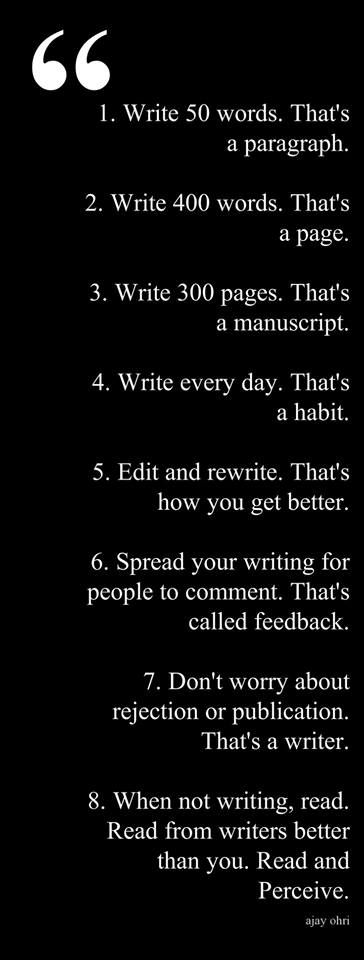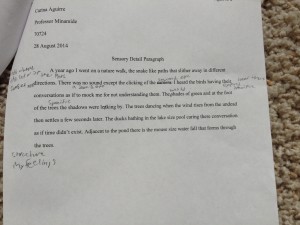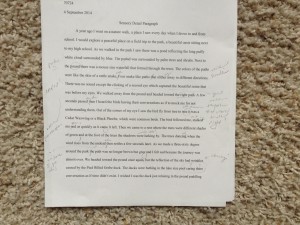The Habit of Writing
“It’s Not Holy Writ”: Dillard on Writing and Revising
I began this semester in English 50 by reading two pieces by Annie Dillard. The first, an excerpt from her book, Holy the Firm, about a moth that flies into a candle’s flame; the second, an essay called “How I Wrote the Moth Essay–and Why.”
There’s a lot to love about Dillard’s approach to writing. I especially love that she has amassed and indexed over 30 of her own journals which she relies on for her own writings, her own personal Google database, if you will. I also love her remarks on writing and revising:
On getting started:
“How do you go from nothing to something? How do you face the blank page without fainting dead away? To start a narrative, you need a batch of things. Not feelings, not opinions, not sentiments, not judgments, not arguments, but specific objects and events: a cat, a spider web, a mess of insect skeletons, a candle, a book about Rimbaud, a burning moth.”
“What do you do with these things? You juggle them. You toss them around . . . you need bits of the world to toss around. You start anywhere, and join the bits into a pattern by your writing about them. Later you can throw out the ones that don’t fit.
On revising:
“[Revising] requires . . . nerves of steel and lots of coffee.”
“It doesn’t hurt much to babble in a first draft, so long as you have the sense to cut out irrelevancies later”
“The most inept writing has an inadvertent element of suspense: the reader constantly asks himself, where on earth is this going?”
“Usually I end up throwing away the beginning: the first part of a poem, the first few pages of an essay, the first scene of a story, even the first few chapters of a book. It’s not holy write.”
“Revising is a breeze if you know what you’re doing–if you can look at your text coldly, analytically, manipulatively.”
On engaging her readers:
“I try to give the reader a story, or at least a scene (the flimsiest narrative occasion will serve), and something to look at.”
“I try not to hang on to the reader’s arm and bore him with my life story, my fancy self-indulgent writing, or my opinions. He is my guest; I try to entertain him. Or he’ll throw my pages across the room and turn on the television.”
My favorite: “It’s not holy writ.”
More important to me, working with students in a beginning composition class, is the phases of writing (yes, the process), than the final product. Show me where you started, I tell them, show me the messy trail that began with those first scribbles in your writing journal to that MLA-formatted final draft. I’ll read the final draft and give it a grade, yes. But if I don’t see a finished product that’s much different from the early drafts, the final grade suffers.
I tell my students this, but I’m not sure they hear, not sure they care.
Some do, though. I was pleased to see a few students getting the idea in a fairly inconsequential early writing assignment, a narrative paragraph, describing a place they’d visited. They brought their paragraphs to class, but I didn’t collect them. We talked about Dillard, on hands and knees in her bathroom, peering at the discarded remains of sow bugs (“those little armadillo creatures who live to travel flat out in houses, and die round”), earwigs, moths (“wingless and huge and empty”), that have collected behind her toilet, beneath a spider’s web, and marvel (I did, anyway) at the writer’s interest in things most of us would sweep up or vacuum away. There, in the detritus, a story, a narrative, a life lesson.
What do you see? What does it feel like? Smell like? Look like? Show me!
I allocated class time to experiment on their drafts, then sent them home to revise (“It’s not holy writ!”). The next class session, I collected both drafts, and read them yesterday.
Some got the idea. I saw scribbles and notes on the first drafts, incorporated into the second, and gave them 10 points for trying. A few students turned in two drafts, virtually identical. I gave them 5 points for not trying. The occasional student rose to the challenge and wowed me. Carina’s, I show here. Students like this make it all pretty much worthwhile.
Why We Write Things on White Board
So just a little humor.
On Tuesday, during a library instruction session for my English 100 students, reference librarian April Cunningham introduced the concept of truncation as a strategy to generate more results in a database search.
She repeated the word several times and even encouraged students to “write this down” because they’re likely to forget once they get home.
At the end of our sessions, I had a follow-up in-class writing task. One of my questions was, “Write down three new strategies that you learned during today’s instruction.”
Most students mentioned truncation. However, nearly all of them called it “trunking.”
One student called it “tree trunking,” and another called it “chunkation.”
Getting Ready for a New Semester
Fall 2013 I’ll be teaching English 50 again, which I haven’t taught since Summer 2011. Besides the fact that I’m a bit rusty, I’ve also adopted a new textbook. To complicate matters, I worked with a publisher’s rep on creating a “cost-effective” version of the text. To complicate matters even further, I went ahead and agreed to include an online learning system called Aplia, bundled as part of the supposedly less expensive text. So now, the students need to purchase the loose-leaf text (to save money), but then also purchase a one-inch binder to contain the text, then learn how to register for Aplia, and then actually begin working with the Aplia exercises, in addition to whatever I assign them this semester.
All to save them a little money and me a little time?
We shall see. In the meanwhile, I feel utterly unprepared for the new semester while I juggle all these new materials and try to determine whether or not the bookstore got the order right. So far, it’s not looking like they did, but my textbook rep says he’s on it.
We shall see!
What’s New!
I’ve been gradually adding new content to this site, as well as reorganizing and renaming pages, trying to make this site useful and easy to navigate. I welcome your feedback.
Recent additions include a slideshow of student displays based on their semester-length research projects, new content under Supplemental Resources and Courses I Teach. I’ve also begun accumulating links under Random Links.
Images
I learned (by doing, mostly) how to change the banner images on the individual pages of this website. I used pictures from my rose garden! How beautiful they are! These were the first blooms from last spring.
I had a bit of trouble with the “Discussion” page, though, and it took me awhile (trial and error) to figure out that I couldn’t just set a new featured image on that page since I had earlier designated it as the static (home?) page of this website.
Eventually I found myself in my dashboard and figured out that I could customize the header. Once I did that (selecting one of my own images from I-Photo), then my Discussion page banner had the image I wanted.
Learn by doing!
Using my Website to Facilitate Class Discussion
Applying one of the new skills that was recently taught in Word Press class, I created a page of video links to use in tomorrow’s class discussion on Classical Appeals. I posted it under “Resources” in my Courses I Teach page. Here’s the link. It’s nothing fancy, but serviceable (I hope).
Word Press: What I Learned
Today, I’m practicing adding media to a blog post. Since I activated a Plugin called “Easy Fancy Box,” I’m hoping the media I add (in this case, a random image) will appear in, well, in a fancy box. Here we go:
Welcome to my Muddling
Here are my first attempts to work with WordPress. Be patient with me as I muddle along.




